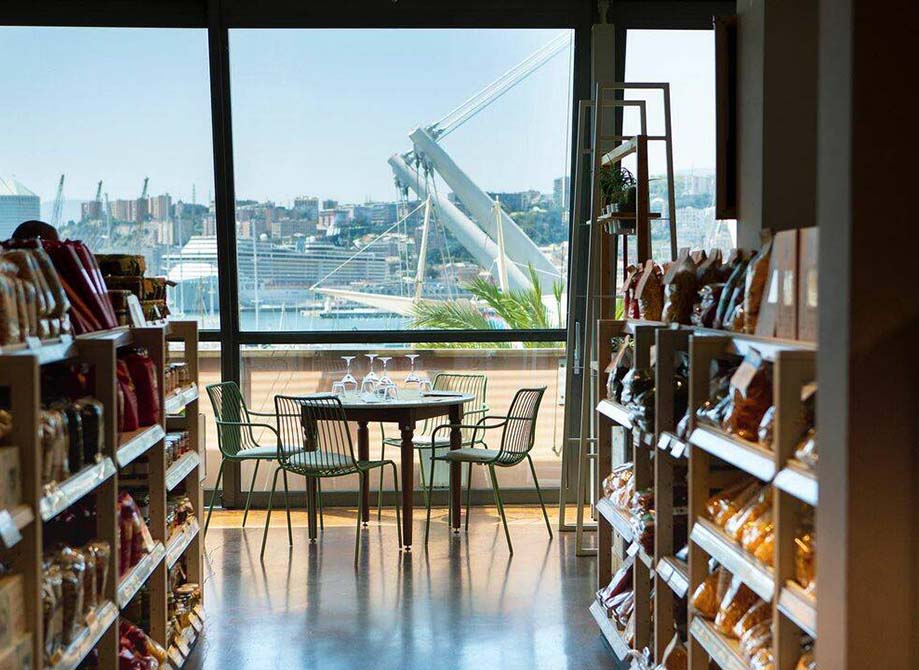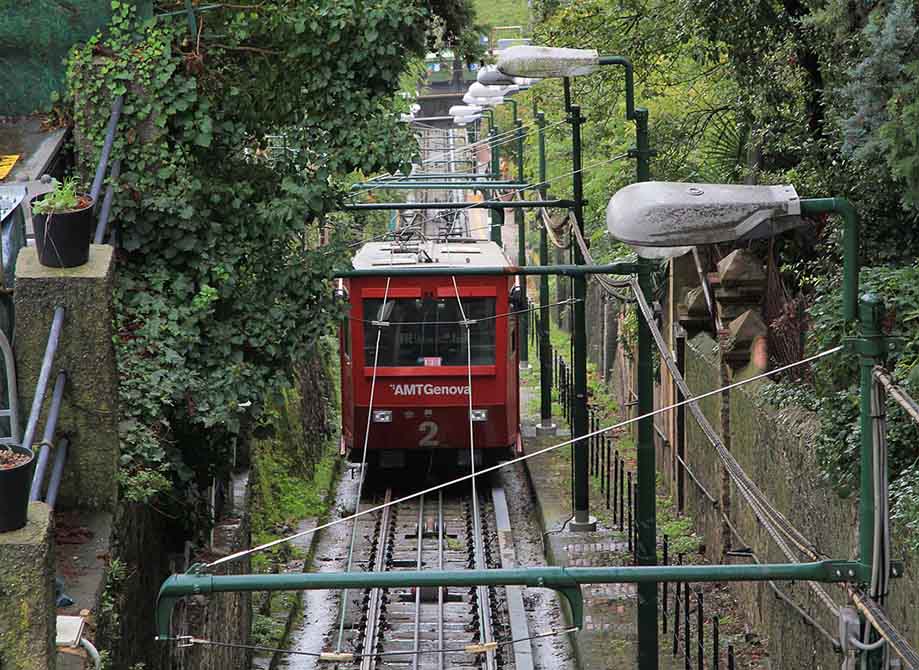Genoa, a port city in northwestern Italy, may not be as famous as Rome or Florence, but its history, culture, and architectural beauty definitely deserve a dedicated visit. Even with just one day, you can fully experience the grandeur of ancient palaces, the vibrant energy of the old port, scenic funicular rides, and the essence of maritime culture. Nestled between the Ligurian Sea and the Apennine Mountains, Genoa offers a truly unique blend of maritime tradition and hillside views, perfect for curious travelers seeking something off the beaten path.
I. Why Choose Genoa?
Genoa is a city with over 2,000 years of history and was once one of the most powerful maritime republics in the Mediterranean. It boasts a well-preserved medieval old town, a modernized port area, and an impressive maritime museum. Christopher Columbus, the famous Italian explorer, was also born here.
More importantly, Genoa is a “vertical city”—built between the sea and the mountains, it features steep streets, public elevators, long arcades, and funiculars that connect different levels of the city. It’s a dream destination for walkers and urban explorers.
What sets Genoa apart is its ability to surprise: behind every corner lies a hidden frescoed church, a quaint alley, or a panoramic terrace. Its layered history—from ancient Roman roots to Renaissance grandeur—makes it a living museum where every stroll feels like time travel. Whether you’re an art lover, history buff, or seafood enthusiast, Genoa offers a rich and authentic slice of Italy that’s refreshingly crowd-free.
II. How to Plan Your 24-Hour Itinerary?
We divide the day into three time blocks to help you get the most out of your limited time:
- Morning: Port culture and marine wonders
Start the day by immersing yourself in Genoa’s seafaring spirit. The old port (Porto Antico) is a lively and family-friendly area where you can visit some of the city’s top attractions, such as the Genoa Aquarium and the Galata Maritime Museum. As the sun rises over the harbor, the waterfront comes alive with joggers, street performers, and locals enjoying their morning espresso.
- Afternoon: Funicular and panoramic mountain views
In the afternoon, change your perspective—literally—by taking one of the city’s iconic funiculars to the hillside district of Righi. The ride itself is a scenic journey through leafy neighborhoods and offers sweeping views of the city below. Once at the top, you can explore historic forts, walk through peaceful green spaces, or simply relax while admiring Genoa’s red-tiled roofs and shimmering coastline from above.
- Evening and Night: Immersive strolls through palaces and the old town
As twilight falls, descend into the historic heart of Genoa along Via Garibaldi, a UNESCO World Heritage site lined with Renaissance and Baroque palaces. Visit art-filled museums like Palazzo Rosso and Palazzo Bianco, then lose yourself in the winding alleys of the old town. Here, candlelit trattorias and ancient churches offer a romantic and mysterious end to your day. The gentle hum of evening chatter, the scent of focaccia in the air, and the golden glow of lanterns make Genoa utterly unforgettable at night.
III. Morning: Porto Antico and the Aquarium
08:00 – Breakfast | Near Piazza De Ferrari
Start your day at the heart of Genoa—Piazza De Ferrari. Nearby cafés popular with locals include Pasticceria Mangini. We recommend a cappuccino paired with a traditional Italian cornetto for an energetic and authentic breakfast.
09:00 – Explore Porto Antico (Old Port)
A 10-minute walk from the city center leads to Porto Antico, a symbolic link between Genoa’s old and new identities. Redesigned by star architect Renzo Piano in 1992, the port has become a cultural and recreational hub.
Highlights to check out:
- Biosfera (The Biosphere): A tropical micro-ecosystem encased in a glass dome, floating near the water.
- Bigo Lift: Modeled after an old crane, this panoramic elevator offers aerial views of the port.
- Galata Museo del Mare (Genoa Maritime Museum): The largest maritime museum in Italy. Exhibits cover everything from ancient navigation to immigration and even include a real submarine you can walk into.
Travel Tip: Book your museum ticket online in advance to avoid queues.
11:30 – Acquario di Genova (Genoa Aquarium)
As one of the largest aquariums in Europe, this is a must-see for visitors of all ages. Home to over 12,000 marine creatures, it includes everything from penguins and seahorses to sharks and tropical fish.
- Suggested visit time: 1.5 hours
- Don’t miss: The manatee tank, coral reef area, and the interactive touch pools

IV. Afternoon: Funicular Ride and Mountain Vistas
13:00 – Lunch | Seafood with a View
Head back to the port for lunch. We recommend Eataly Genova (on the second level of Porto Antico) for fresh seafood and pasta with a sea view.
Must-try dishes:
- Trofie al Pesto: Genoese pesto pasta with twisted noodles
- Frutti di Mare: Mixed seafood platter
- Pair with: A glass of dry white wine from the Ligurian coast
14:30 – Ride the Zecca–Righi Funicular
From Zecca station, take the Zecca–Righi funicular up into the hills. The ride takes about 20 minutes and offers scenic views of rooftops and the sea as it climbs through neighborhoods and wooded hillsides.
Top things to do at the summit:
- Castello Righi ruins: A lesser-known spot, perfect for photos
- Righi Park: Ideal for a light stroll or a casual picnic
- Scenic viewpoints: Multiple terraces provide sweeping views of the city, port, and Ligurian Sea
Photo Tip: Afternoon sunlight from the west casts a warm glow over the city—perfect for photography.
V. Evening and Night: Palaces & Old Town Exploration
17:00 – Visit the “White Palace,” “Red Palace,” and Via Garibaldi
Once back in town, walk to the UNESCO-listed Via Garibaldi, home to magnificent Baroque palaces once owned by Genoa’s noble families.
Notable palaces:
- Palazzo Rosso (Red Palace)
- Palazzo Bianco (White Palace)
- Palazzo Doria Tursi
These palaces now serve as art museums and showcase works by Rubens, Van Dyck, and Italian masters. The interiors themselves are also artistic marvels.
Ticket Tip: Buy the Strada Nuova Museums pass for access to all three.
19:00 – Dinner in the Old Town | Trattoria da Maria
Head into Genoa’s charming old town for a hearty local dinner at Trattoria da Maria, a traditional and much-loved family-run trattoria.
Recommended dishes:
- Farinata: Chickpea flatbread, a signature Genoese snack
- Pasta al Guanciale: Pasta with cured pork cheek
- Finish with: Homemade tiramisu
20:30 – Evening Stroll in Genoa
After dinner, take a gentle walk through the old town or along the port. The evening atmosphere is quiet and mysterious, with cobbled alleys and ancient buildings transporting you back in time.
Suggested walking route:
- Piazza Banchi
- Cattedrale di San Lorenzo (Genoa Cathedral)
- Old Port Night View: Sit by the waterfront to relax and soak it all in

VI. Practical Travel Tips
Getting Around:
- Walking combined with public transport is the best way to explore Genoa. Many of the city’s highlights—such as the old port, Via Garibaldi, and the cathedral—are located within walking distance of each other. That said, due to the city’s unique vertical layout and hilly terrain, you’ll likely want to use the public transit system at least a few times.
- The funiculars, public elevators, and buses are all part of the AMT transit network. Consider purchasing a 24-hour AMT ticket for just €4.50, which grants unlimited access to buses, metro, elevators, and all funiculars. This ticket is especially useful if you’re planning to explore both the lower harbor areas and the hilltop viewpoints.
- From Cristoforo Colombo Airport, the most convenient connection to the city center is the Volabus shuttle, which runs approximately every 30 minutes and drops you off at key stops like Brignole and Piazza Principe stations. The journey takes around 25 minutes and costs about €6—tickets can be purchased online or directly on board.
Safety Tips: Genoa is generally a safe city, and tourists rarely encounter serious issues. However, like any urban destination, there are a few precautions worth keeping in mind to ensure a worry-free experience.
Some alleys in the historic old town (Centro Storico)—known locally as the caruggi—are narrow, dimly lit, and maze-like. While charming by day, they can feel deserted at night, so it’s best to avoid walking alone in quieter areas after dark, especially if you’re unfamiliar with the layout.
Pickpocketing can occur in busy places, especially near train stations, the port area, and crowded buses, so keep your bags zipped and valuables secure. Use a cross-body bag and consider leaving your passport at your hotel.
Also, watch your step on the steep or cobblestone streets, particularly after rain, as some areas can become slippery. Good walking shoes with grip are a must.
Lastly, locals are friendly and willing to help, but English may not be widely spoken outside of tourist hotspots—so having a translation app or a few basic Italian phrases on hand can go a long way.
VII. Even One Day is Enough to Feel Genoa’s Soul
You might have planned to “explore Italy thoroughly one day,” but sometimes the magic of travel lies in a brief, spontaneous adventure. Genoa’s blend of ancient and modern, sea and hills, gives you immense satisfaction even in just 24 hours.
From the port’s morning light and the funicular’s panoramic views to the palace galleries and winding alleys, every moment in Genoa lingers long after you’ve left. Even in a day, you can truly feel the city’s essence—and that makes all the difference.
